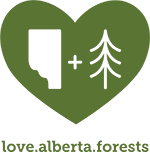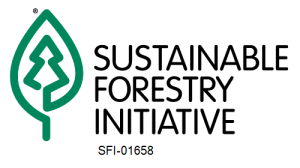Due to the COVID-19 pandemic, Spray Lake Sawmills (SLS) is unable to hold its annual in-person open house and collaborative planning sessions. Information on upcoming harvest plans is available below for review. Please provide your feedback to integrate it into plan development. We’re looking forward to answering your questions and gathering input on our proposed plans.
SLS will update this page routinely to provide additional information and responses to feedback received.
Thank You
FMA
- Open House and Collaborative Planning Session Information
- AOP Block List
- Open House Maps :
- Collaborative Planning Session (Preliminary Forest Harvest Plan) Maps:
C5
- Open House Information
- AOP Block List
- Open House Maps:
- Preliminary Forest Harvest Plan Maps:
- Lower Livingstone C2L25
- Lower Livingstone C5L4 (Regal Creek)
- Lower Livingstone C5L8 (Wintering Creek)
- Middle Ridges Upper Oldman C5L7
- NorthLivingstone-Livingstone C2L25 (White Creek)
- NorthLivingstone-Livingstone C2L25
- Upper Livingstone C2L24 (Vicary Creek)
- Upper Livingstone C2L26 (Coat Creek)
- Upper Livingstone C5L19 (Riley Creek)
- Upper Livingstone C5L19 (West Chain Lakes)
Comment received May 20, 2020 summarized:
* Why do you continually log so close to Eastern slope creeks and rivers? Can you not do a better job and take voluntary measure to increase your setbacks to something better than the regulatory requirements?
* When and where do you think you will be harvesting second generations forests? There is not an endless supply of timber – you surely must understand this as tree growth is unbelievable slow in the Eastern slopes of Alberta.
SLS Response:
SLS operates in accordance to the Timber Harvest Planning and Operating Ground Rules (OGR), updated in 2020 (https://spraylakesawmills.com/wp-content/uploads/2020/05/2020-SLS-Operating-Ground-Rules.pdf (https://spraylakesawmills.com/wp-content/uploads/2020/05/2020-SLS-Operating-Ground-Rules.pdf) ). Riparian areas adjacent to watercourses and water source area perform a number of ecological functions including regulating stream flows and temperature, reducing erosion by providing bank stability, and providing habitat supporting a high diversity of wildlife species. The regulatory setbacks are proven to meet the requirements to protect watercourses and water source area. Exceeding these setbacks does not further protect the water feature, and only increases fuel loading and fire risk in the area – large scale wildfire is the biggest threat to contaminating forest reserve water quality. Timber harvest operations are designed and operated to help prevent large scale wildfire while maintaining forest reserve water quality and quantity in a natural and desirable condition.
SLS is committed to sustainable forest management; a long-term goal to maintain natural ecosystems, communities and native species in the forest in balance with social and economic needs. Information collected to develop the Forest Management Plan includes vegetation inventories, land classifications, succession modelling, habitat suitability modelling, forest growth and yield sample plot, and more. Tree growth is slow in the Eastern slopes of Alberta, but it is easily measurable. Forest growth sample plots are vital as tree growth is measured and tracked over time to determine how the forest is growing across the landbase, correlating to a permitted annual allowable harvest level. There is a common misconception on how vast and resilient the forests are in Alberta and the SLS landbase. Harvest levels are designed, approved by Alberta, and proven to be sustainable. SLS has operated for over 75yrs sustainably on the Eastern slopes and operating sustainably is how SLS will continue producing forest products into the future. Please see https://spraylakesawmills.com/woodlands/ (https://spraylakesawmills.com/woodlands/) for more information on forest management.
Comment received May 21, 2020 summarized:
* Will overlap with Lusk Pass Trail in JP_3627 be referred to Alberta Environment & Parks (AEP)? What measures does SLS plan to take to maintain public safety during operations and to restore this trail to usable condition following operations?
SLS Response:
The harvest plan for the Jumpingpound compartment was completed and submitted in 2018, part of the Alberta review includes referral to AEP. The maps were also discussed or available for discussion at several Kananaskis Trail Advisory Group meeting throughout plan development. There is overlap with Lusk Pass Trail within JP_3627, a portion of which is utilized by the temporary road for hauling access. SLS operates in accordance to the Timber Harvest Planning and Operating Ground Rules (OGR), updated in 2020 (https://spraylakesawmills.com/wp-content/uploads/2020/05/2020-SLS-Operating-Ground-Rules.pdf (https://spraylakesawmills.com/wp-content/uploads/2020/05/2020-SLS-Operating-Ground-Rules.pdf) ). The OGR describes SLS’s requirement to restore all designated trails and their associated watercourse crossings that may be affected by operations, bringing the site back to the condition it was in prior to industrial use. SLS will work with Alberta to restore this trail to its pre-existing condition upon completion of activities. Throughout operations, although the trail will remain open a temporary impact to trail condition/use is to be expected. Where harvest and haul operations are in proximity to high public use areas (very common across the SLS landbase) additional signage will be posted alerting the public to inherent dangers of an active work site and providing a contact number should someone want more information.
Comment received May 22, 2020 summarized:
* It appears that the proposed north cut block at Jumpingpound is over top of the existing Lusk Pass trail and maybe a portion of the Baldy logging interpretive trail. Has an overlay been done of the cut blocks on OpenStreetMap or OpenTopoMap?
SLS Response:
Block JP_3627 and a portion of the in-block road overlaps Lusk Pass Trail, block JP_3566 and a portion of one of the in-block roads overlaps Baldy Pass Trail. Both are seen on the Jumpingpound maps as ‘KC Trails’ in a brown dashed line. SLS annually receives the updated designated trails from Alberta, an overlay with OpenStreetMap or OpenTopoMap is not necessary. As discussed in the response to the May 21 comment, SLS is responsible to restore any impacted designated infrastructure upon completion of activities.
Comment received June 8, 2020 summarized:
* When viewing the McLean Creek Topo map it appears that there is planned cutting along an official trail, the 9999, where it swings south not far from the North Fork PRA. Laid out roads 3115D/E are nearby or cross this trail, and an identifier 5040203115A is shown in this area. It is my understanding that official trails are to be respected, avoided or if crossed that safe crossings will be provided. As a backcountry horse rider, and active autumn and winter user of this trail, I’m very concerned about losing this access or having unsafe passage resulting from the logging activities that are planned there. Please would you clarify my understanding and hopefully put my concerns to rest?
SLS Response:
This block(MC_3115 or 5040203115A) is currently scheduled for next operating season, likely Nov 2021 – Feb 2022. However, it is in the operating plan for this year for contingency purposes so there is a chance that it will be moved into this operating season. The designated trails are mapped as a dashed brown line, shown in the legend as KC Trails. Your understanding is correct – Designated trail crossings are avoided wherever possible; SLS is required to maintain safe passage on intersecting designated trails, place additional signage to alert trail users to overlapping activities, and restore the trail to pre-existing condition. This is addressed in the operating ground rules, specifically:


